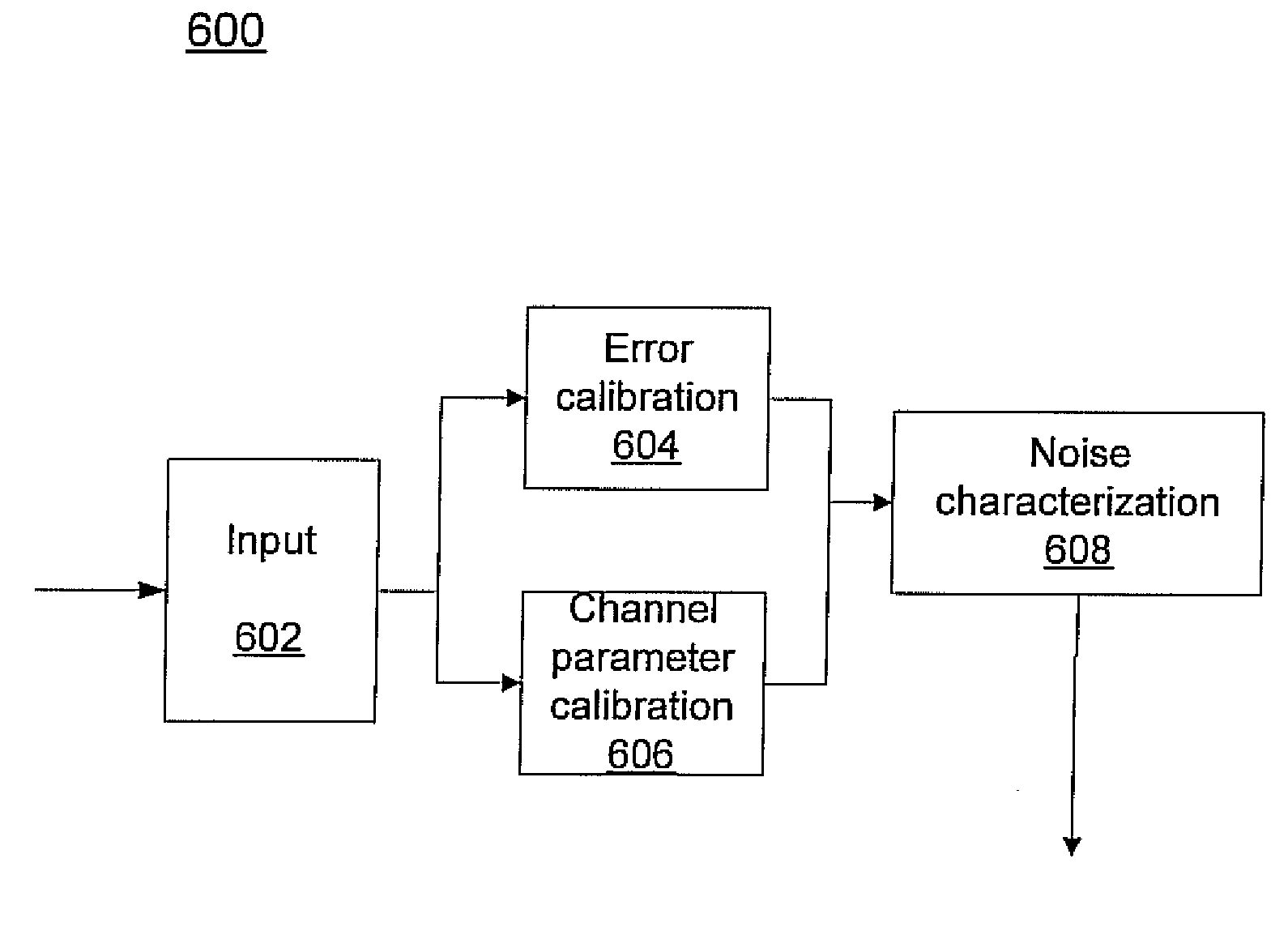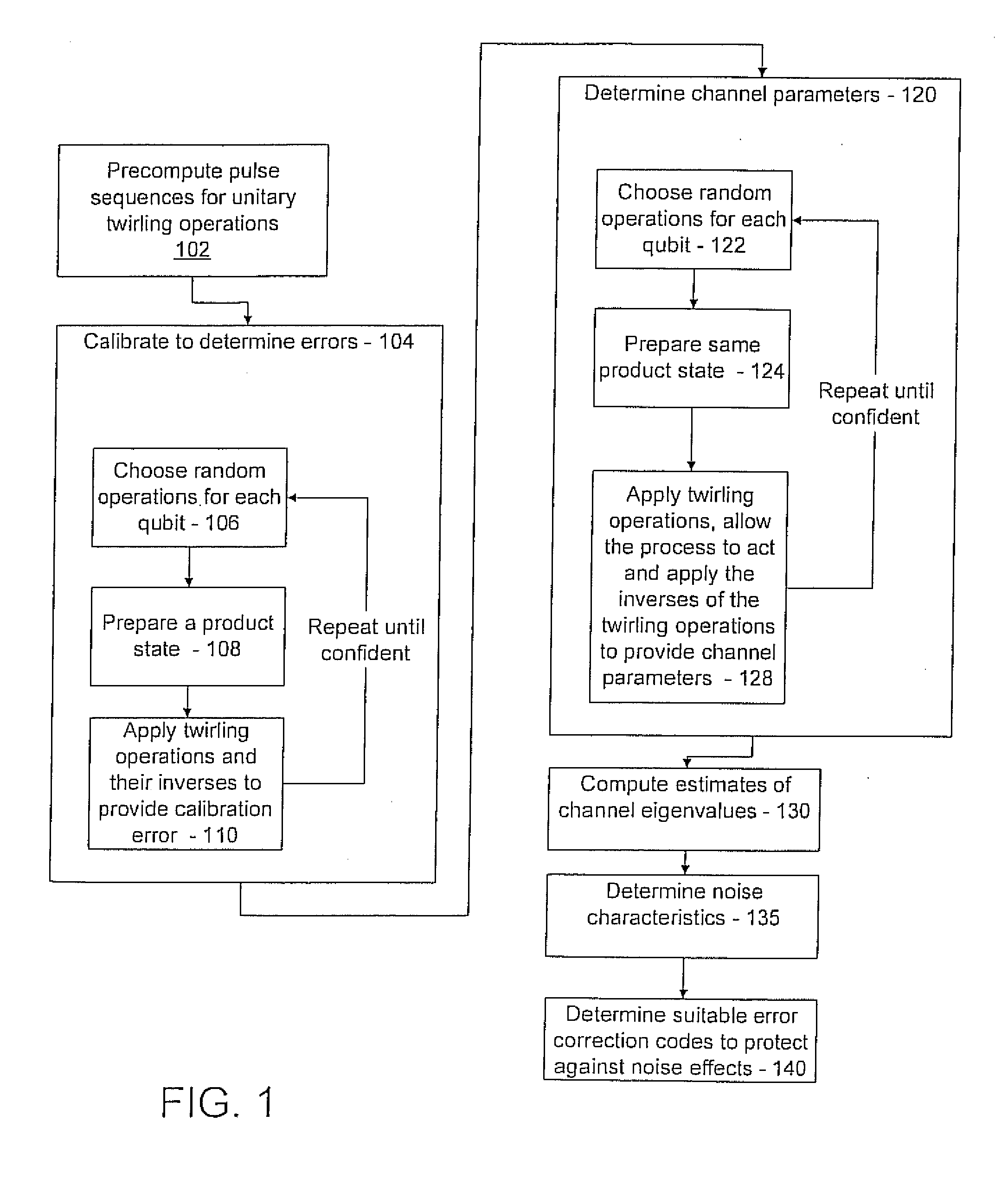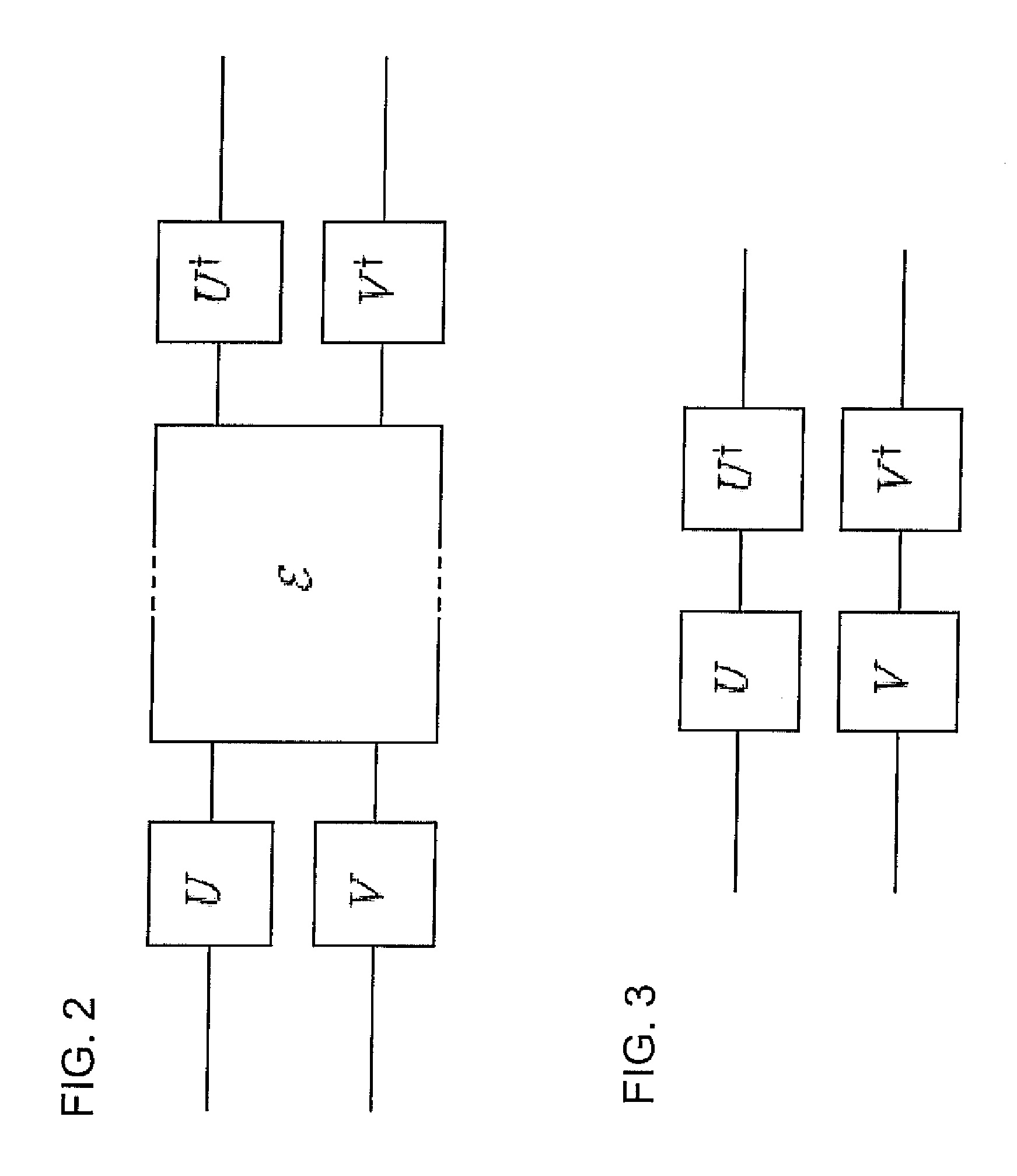System and method for quantum computer calibration and performance estimation
a quantum computer and performance estimation technology, applied in the field of quantum computing, can solve the problems of difficult composite operations of 2 or more qubits, difficult to apply composite operations, and difficult construction of quantum computers
- Summary
- Abstract
- Description
- Claims
- Application Information
AI Technical Summary
Benefits of technology
Problems solved by technology
Method used
Image
Examples
Embodiment Construction
[0022]In accordance with the present principles, a system and method to perform a characterization for correlated or uncorrelated noise with a much simpler experimental setup that is closer to currently available hardware. Possible uses for performance estimation and calibration once the quantum computer increases in size are also provided.
[0023]One technical problem addressed by the present principles is that of determining the type and strength of a particular type of noise that can affect a quantum computer. This noise is called energy relaxation. The present embodiments deal with the problem of efficiently estimating properties of noise operations that affect a quantum computer. Mathematically, a noise operation is modeled by the concept of a “super-operator” which is a matrix of exponential size in the number of qubits. In general, exponentially many parameters are necessary to give a complete description of the noise.
[0024]In accordance with the present disclosure, a subset of...
PUM
 Login to View More
Login to View More Abstract
Description
Claims
Application Information
 Login to View More
Login to View More - R&D
- Intellectual Property
- Life Sciences
- Materials
- Tech Scout
- Unparalleled Data Quality
- Higher Quality Content
- 60% Fewer Hallucinations
Browse by: Latest US Patents, China's latest patents, Technical Efficacy Thesaurus, Application Domain, Technology Topic, Popular Technical Reports.
© 2025 PatSnap. All rights reserved.Legal|Privacy policy|Modern Slavery Act Transparency Statement|Sitemap|About US| Contact US: help@patsnap.com



